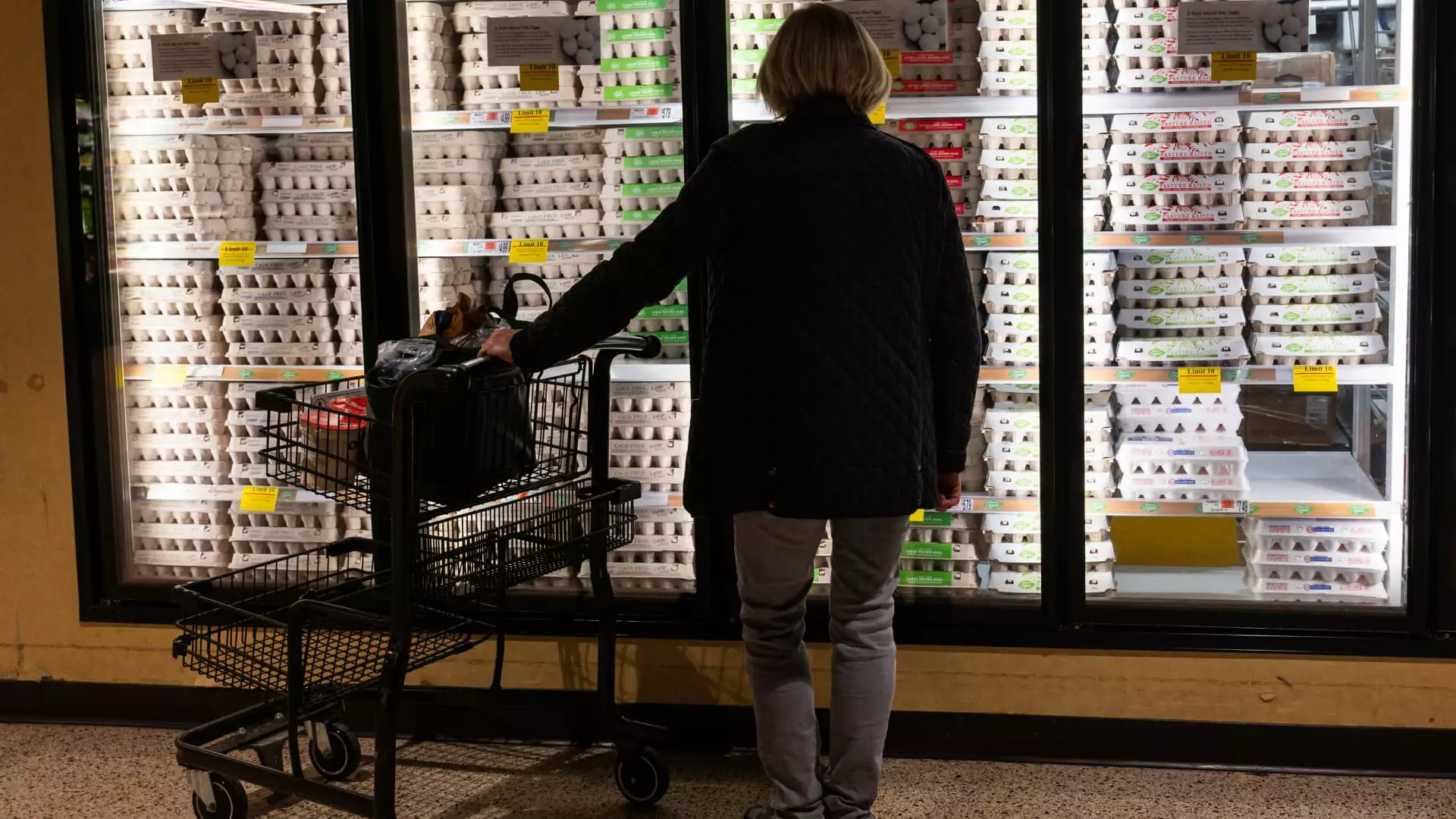The recent fluctuations in wholesale egg prices have been nothing short of dramatic, leaving both consumers and grocery store owners in a state of bewilderment. Just a few months ago, average retail prices soared to $5.90 per dozen, marking a staggering rise that eclipsed previous records and sent shockwaves through the average household budget. Economically vulnerable families, already grappling with rising living costs, now faced the harsh reality of soaring egg prices—a staple in many diets. With the wholesale price hitting a peak of $8.58 per dozen in late February, the question persists: Why is such volatility occurring in what should be a stable food market?
Fluctuating Demand and Supply Shocks
Experts have cited a combination of factors influencing this roller coaster ride. Initially, an aggressive outbreak of bird flu led to the demise of millions of egg-laying hens, drastically reducing supply. The ensuing panic pushed prices to unprecedented heights, echoing the fear-driven shopping behaviors seen during the early days of the COVID-19 pandemic. As consumers, motivated by anxiety over continuous price hikes, haphazardly stockpiled eggs, the market began to reflect not merely economic reality but collective consumer fear.
However, the recent decline in wholesale prices—falling to as low as $4.83 per dozen—has provided a glimmer of hope. This sharp drop signifies emerging relief for beleaguered consumers, but it also underscores an unpredictable cycle; as families buy fewer eggs, driven by both high prices and purchasing restrictions, available supply has improved. The intertwined dance between demand and supply is evident, yet the consumer is left grappling with questions regarding how quickly and sustainably retail prices will adjust to reflect these changes.
The Role of Major Producers and Market Dynamics
Compounding these tensions is an ongoing antitrust investigation by the U.S. Department of Justice targeting major egg producers, which raises critical questions about market manipulation and fairness. Is it possible that corporations are leveraging crises—like the bird flu outbreak—to increase profit margins at the expense of everyday consumers? Given that egg production is dominated by a handful of companies, this scenario raises ethical as well as economic concerns.
Market analysts, like Karyn Rispoli from Expana, hint at underlying pressures forcing wholesale prices down even further. Rispoli notes that while the wholesale market is responding with price declines, retail prices typically lag behind—and this delay could mean the consumer feels the pinch for weeks to come. Such market disparities not only contribute to mistrust but also highlight the fractures in the supply chain that can lead to persistent price volatility.
The Consumer Perspective
From the consumer standpoint, the landscape appears increasingly grim. Families are not just feeling the weight of escalating egg prices; they are confronting a broader economic crisis where essentials become luxuries. The upcoming Easter holiday further complicates matters, as demand spikes and prices are likely to fluctuate even more erratically.
Yet, what exacerbates this situation most acutely is the emotional toll taken on consumers who see their grocery bills rising. Eggs, often considered the most affordable source of protein, have now transformed into a luxury item for many. The anxiety surrounding prices has re-emerged, leading to questions about food security and the overall integrity of the food supply chain.
An Uncertain Future
Looking ahead, the path forward appears convoluted at best. While there are signs of recovery in the egg market, one must remember the cyclical nature of agricultural supply and demand. The current dip in prices may not signify a sustained downward trend but instead a temporary alleviation, making the situation ripe for further instability.
As more families wrestle with financial strain, it is imperative for policymakers and economic experts to consider the long-term implications of such volatility. Ensuring equitable pricing and safeguarding against future supply shocks are not just economic necessities; they represent moral imperatives in a system that is increasingly failing to serve the needs of the average consumer. The stakes of this crisis extend beyond just eggs; they signify a broader challenge in ensuring the stability and fairness of food markets overall.


Leave a Reply